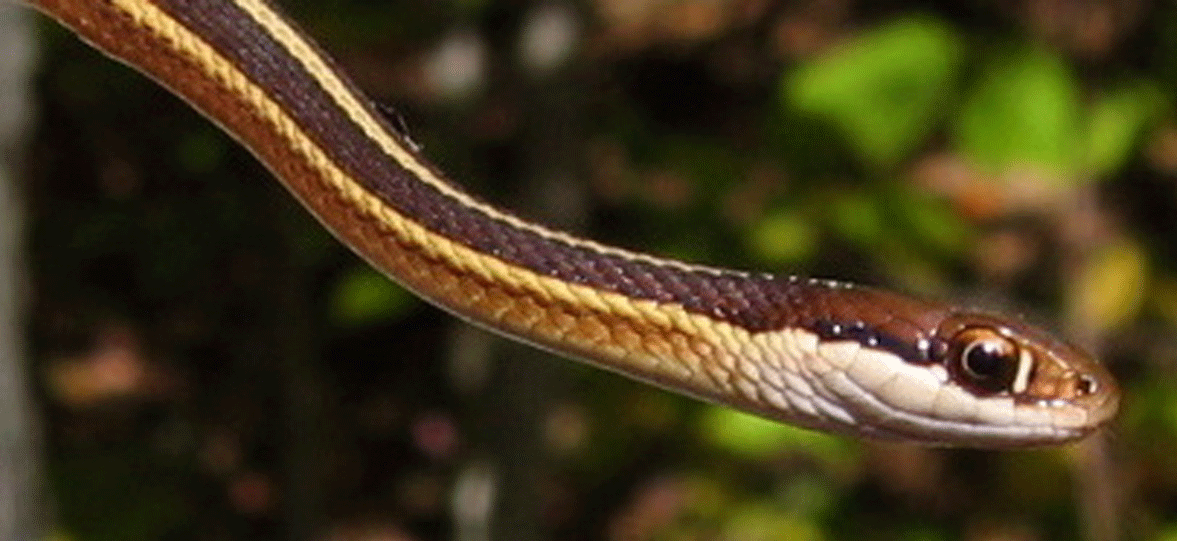
The very rare Eastern Ribbonsnake (Thamnophis sauritus) looks very similar to the much more widespread Common Gartersnake. They both have three yellow, length-wise stripes on a dark background. In Vermont, all snakes with yellow stripes should be assumed to be Common Gartersnakes unless the head markings suggest otherwise.
The Ribbonsnake has three yellow, length-wise stripes on a black background. A checkerboard pattern is rarely visible between the stripes. The head is dark reddish-brown over a white upper lip and there is a vertical white bar just in front of the eye. The shiny white upper lip of an Eastern Ribbonsnake can be seen from quite a distance. Also look for the mahogany stripe along the lower sides and edges of the belly.
The Ribbonsnake is more slender than the Gartersnake. About ¼ to ⅓ of its total length is the tail. They may reach 2 to 3 feet long (the longest documented in Vermont is 35 inches).
Key Differences Between Gartersnake and Eastern Ribbonsnake:
- Eastern Ribbonsnake head markings: bright white upper lip, reddish-brown on top of head, straight black line behind eye, vertical white bar in front of eye (a very rare snake in Vermont).
- Common Gartersnake head markings: yellowish upper lip, olive green on top of head, no black line behind eye, no vertical white bar in front of the eye, yellowish “ear” spots (a very common snake in Vermont).
Habitat
The Eastern Ribbonsnake may be found in pastures, open woods, and rocky areas. They are almost always near water, and they seem to prefer warm microclimates.
Reproduction
Mating typically occurs when snakes emerge from hibernation. Males seek out females and attempt to mate with them.
Mating takes place soon after these snakes have emerged from hibernation in the spring, they also sometimes mate in the fall. Live young are born in late summer, litter size ranges from 4 to 27 young, with 12 being average. Young snakes grow rapidly and often become mature before their second year, though some females don't breed until their third year.
Diet
Eastern ribbon snakes eat mainly frogs,salamanders, and their larvae. They will also eat small fish, but rarely eat earthworms. They capture prey by stalking or chasing them.
Management
All sightings of the Eastern Ribbonsnake should be reported, as these are a species of greatest concern due to low population numbers. Report your sightings to the Vermont Herp Atlas (after confirming using the head markings above that your snake is an Eastern Ribbonsnake, not a Common Gartersnake)..
Status
The Eastern Ribbonsnake is rare in Vermont and is a species of special concern. It has been designated a Species of Greatest Conservation Need (high priority) in Vermont's Wildlife Action Plan.
